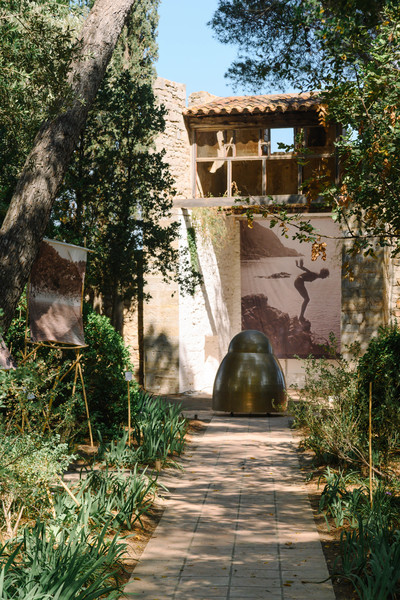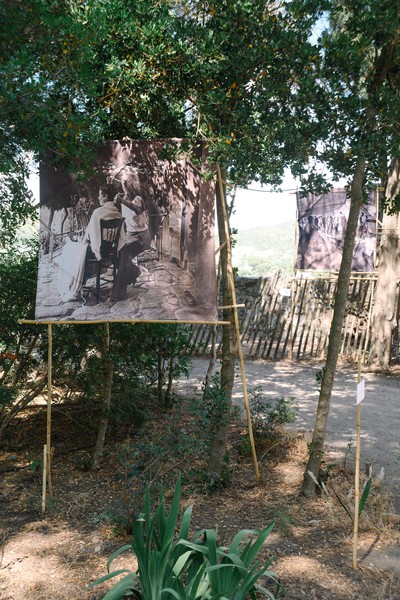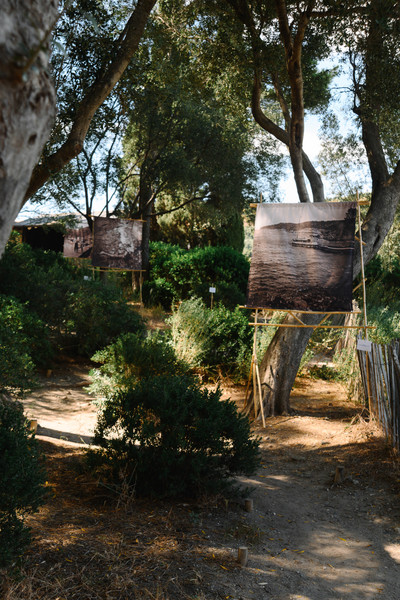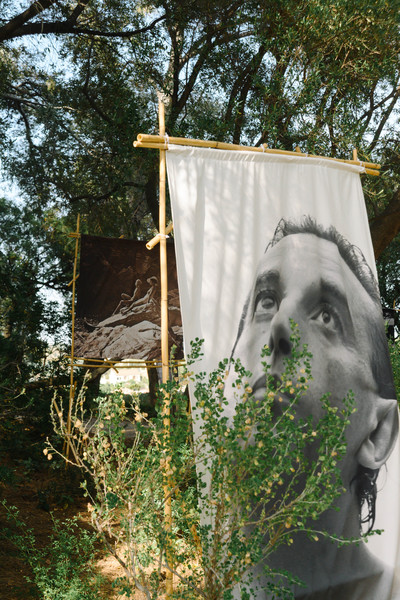Portraits de la peintre Honor David-Gell à l’île du Levant, photographe inconnu, 1932-1933 Collection Léonard Lassalle et photographies de Arlette Kotchounian
Collection Léonard Lassalle
Scenography by Marc Turlan
As part of the exhibition “Paradis naturistes” on display at the Mucem, Marseille
In partnership with Puntoseta
The fruit of a comprehensive gathering, the exhibition “Paradis naturistes” focuses for the first time on naturist communities, bringing together private objects from popular practices and museum works.
Inheriting German and Swiss practices, France developed a variety of ways of getting in touch with nature in the early twentieth century, making up a naturist nebula: so-called natural medicine, anarchism, hygiene movement, nudism, vegetarianism, sports in the great outdoors, and esoteric philosophies. The communities represented in this exhibition began to emerge in the 1920s, and all gave rise to original architectures. The 1950s saw the rise of a more popular form of naturism, with the creation of the Clubs du Soleil (Sun Clubs) and the Fédération française de naturisme (French Naturist Federation). Today, France is the world’s leading tourist destination for naturists.
The history of naturisms is obviously that of our relationship to the body and to modesty, and that of the evolution of morals and standards. The pioneers of naturism built utopias fuelled by aspirations for freedom, emancipation, equality, and respect. Some of them were involved in environmentalist, antimilitarist, and feminist struggles. However, these countercultures were also prescriptive, promoting slender, athletic bodies as the only model, with the overuse of highly eroticised female bodies, contradicting the stated spirit of equality. Nowadays, new practices are challenging these stereotypes, in favour of a new bodily and social ecology.





